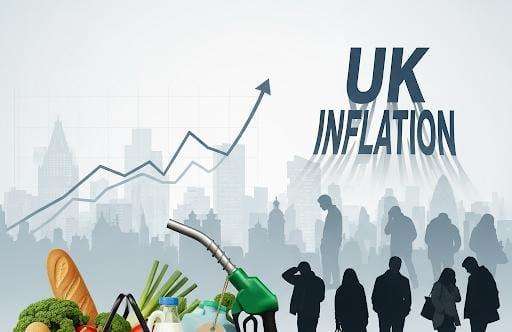The UK is grappling with a fresh blow to its economic recovery as inflation unexpectedly surged to 3.8% in July, surpassing market forecasts and casting a long shadow over the future. This latest increase, measured by the Consumer Price Index (CPI), marks the tenth consecutive month that inflation has remained above the Bank of England's 2% target, fueled by a sharp rise in the cost of essential goods, particularly food and fuel.
The higher-than-anticipated figure, which climbed from 3.6% in June, has dashed any remaining hopes of an imminent interest rate cut from the Bank of England. While the central bank trimmed rates to 4% earlier in the month based on projections of a future fall in inflation, this latest data point suggests a different reality. The Monetary Policy Committee (MPC), which had already seen some members vote to hold rates steady, is now under immense pressure to maintain a tighter monetary policy. This move, while necessary to combat inflation, will likely push the timing of any future interest rate cuts deep into 2026, further straining households and businesses.
Beyond the official statistics, many economists and analysts warn that the true economic situation is considerably more dire. While the CPI measures a basket of goods, it often fails to capture the full impact of price rises on everyday life. Anecdotal evidence suggests that the cost of living for many has already far outstripped the official inflation rate, with grocery bills and energy costs skyrocketing.
Several factors are contributing to this economic gloom. Domestically, companies have pointed to recent employment tax hikes and the lingering uncertainty from Donald Trump's tariff war as reasons for increased prices. Internationally, climate events such as droughts in Spain have a direct and painful impact on UK food prices, highlighting the country's vulnerability to global supply chain disruptions. Furthermore, energy consultancy Cornwall Insight has predicted that the energy price cap for domestic electricity and gas will rise by an additional £17, or 1%, in October, compounding the financial pressure on households just as winter approaches.
As the cost of living crisis deepens and the threat of a looming recession grows, the question for many is not if, but when, the full force of this economic downturn will be felt. The current data, while worrying, may only be the tip of the iceberg, with a more severe and sustained period of economic hardship on the horizon.


_3.jpg)
_2.jpg)




.svg)


